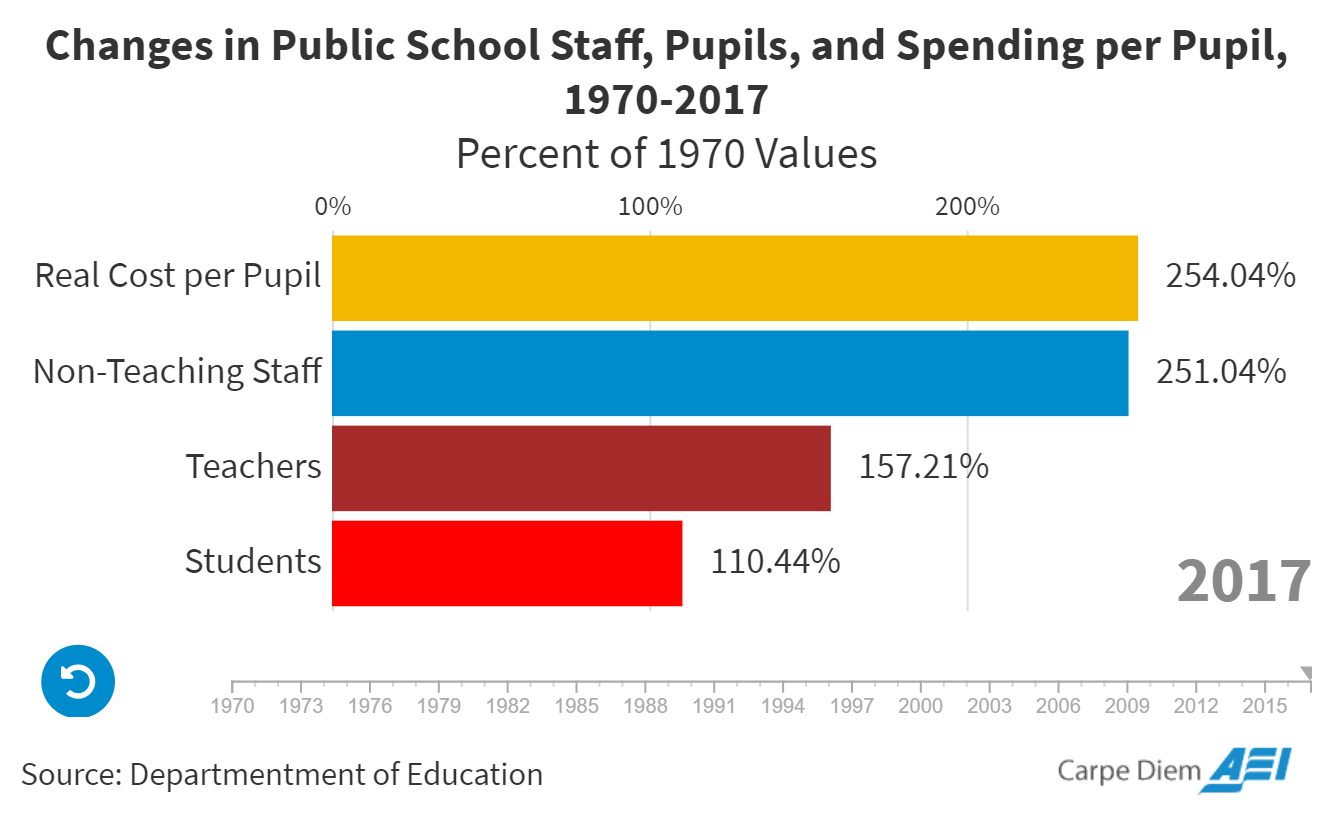This chart provides a reminder from the American Enterprise Institute that inflation-adjusted spending per student of K-12 public schools across the country has increased almost two-and-a-half times as rapidly over the past 50 years as the number of students. The education system is paying for more teachers and a whole lot more non-teaching staff. (Click here to see a “bar chart race” visualization over time.) But it never seems to be enough.
I suspect that most taxpayers would agree to pay more in taxes and give educators what they say they need if they knew that more money would actually lead to better educational outcomes. But educational achievement has stagnated for the last couple of decades at least. It is tempting to conclude that cries of more money for “social justice” is just the latest con game to redistribute wealth — in the name of minorities and the poor — from taxpayers to a floundering educational system.


Leave a Reply
You must be logged in to post a comment.